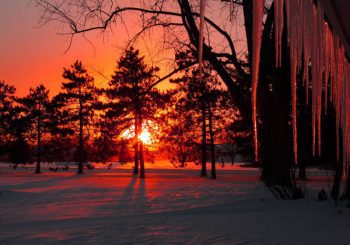By Sayer Ji
Contributing writer for Wake Up World
Ah, the blues. Is it the post-holiday letdown? The excess sugar? Less sunlight that comes with the winter season? Seasonal affective disorder (SAD) is the name often given to this phenomenon. It’s a seasonally recurrent kind of major depression, with little known about how it affects people in the summer.[i]
About 10% to 20% of cases of recurrent depression follow a seasonal pattern. While a summer pattern isn’t entirely ruled out, the predominant trend involves fall/winter depression with spring/summer remission.[ii]
SAD is distributed across the general population.[iii] Young adults and women, however, are most likely to experience it, with the reported gender difference following a 2:1 to 9:1 range. It has also been identified in children and teens. Here are some ways to combat SAD, and its less severe cousin “the winter blues,” naturally.
1. Vitamin D
A 2015 study probed the relationship between 25-hydroxyvitamin D (25(OH)D) and depressive and anxiety disorders in a population of Finnish men and women ages 30 to 79.[iv] The study sample involved 5,371 subjects, of which 354 were diagnosed with depression and 222 with anxiety.
Subjects with higher vitamin D3 levels showed a reduced risk of depression. Higher serum concentrations of the nutrients were linked to a lower prevalence of depression particularly among men, younger people, divorcees and those who had an unhealthy lifestyle or metabolic syndrome.
“These results support the hypothesis that higher serum 25(OH)D concentrations protect against depression even after adjustment for a large number of sociodemographic, lifestyle and metabolic factors,” wrote the authors.
2. Light Therapy
Widely investigated for treating SAD is light therapy, or daily exposure to a box containing fluorescent lamps during symptomatic months. Regarding optimal dosing, 10,000 lux of full spectrum or cool white fluorescent lights behind an ultraviolet shield is deemed the standard, with a recommended duration of 30 minutes to two hours per day for two to four weeks.[v]
Bright light therapy has been deemed effective for seasonal depression as well as non-seasonal depression.[vi],[vii] Evidence also shows that it may improve responsiveness to antidepressant treatments.
While light therapy and antidepressants previously showed comparable effectiveness in treating SAD, few studies directly compared them.[viii] A 2006 double-blind randomized trial, conducted in four Canadian centers across three winters, randomly assigned 96 patients to eight weeks of treatment: 10,000 lux light treatment and a placebo capsule, or placebo light and 20 milligrams (mg) of fluoxetine (brand name Prozac) a day.
Findings showed that while there were no significant differences in results between light therapy and antidepressant treatment, the former led to earlier response onset and lower rate of adverse events relative to fluoxetine. Fluoxetine was linked with side effects such as agitation and sleep disturbance as well as palpitations, although both treatments were generally well-tolerated by the subjects.
3. Melatonin
In a 1986 study, researchers tested the hypothesis that melatonin mediated the effects of shortening days on SAD symptoms in the winter.[ix] Based on the results of three different studies, they found that melatonin secretion may be abnormal in SAD. It may play some role in the symptoms and the effects of light therapy, but was claimed unable to account for the phenomena all by itself.
Melatonin supplementation alone has yielded mixed results in clinical trials in winter depression. In a study, for instance, evening melatonin was no more effective than placebo in sustaining a desired antidepressant effect.[x] Yet some people may respond to 2 to 3 mg of melatonin at bedtime and to support the resetting of their body clock.[xi]
4. Cannabidiol (CBD)
CBD, a constituent of Cannabis sativa, has drawn much interest in recent years for fending off a range of neuropsychiatric disorders as well as depression and anxiety related disorders.[xii],[xiii]
CBD can be incorporated in one’s diet through the winter months, particularly in cooking and creating CBD-infused ingredients to be used in common recipes.[xiv] Other common forms of CBD include CBD oil, capsules, paste, drops, crystals and food supplements.
5. Regular Exercise
Aerobic exercises have been demonstrated to be beneficial in treating non-seasonal major depression. Thus, they have been explored for SAD.
In a study, supervised physical exercise paired with bright light exposure appeared to be effective in enhancing mood and certain aspects of health in wintertime.[xv] In healthy subjects, exercise in bright light led to greater symptom relief than in ordinary room light and led to improvements in both depressive symptoms and vitality rather than just the latter.
References:
[i] Nussbaumer-Streit B et al “Implementing prevention of seasonal affective disorder from patients’ and physicians’ perspectives – a qualitative study” BMC Psychiatry. 2018; 18(372).
[ii] Roecklein K et al “Seasonal Affective Disorder” Psychiatry (Edgmont). 2005 Jan; 2(1): 20-26. Epub 2005 Jan.
[iii] Roecklein K et al “Seasonal Affective Disorder” Psychiatry (Edgmont). 2005 Jan; 2(1): 20-26. Epub 2005 Jan.
[iv] Jääskeläinen T et al “Higher serum 25-hydroxyvitamin D concentrations are related to a reduced risk of depression” Br J Nutr. 2015 May ;113(9):1418-26.
[v] Roecklein K et al “Seasonal Affective Disorder” Psychiatry (Edgmont). 2005 Jan; 2(1): 20-26. Epub 2005 Jan.
[vi] Penders T et al “Bright Light Therapy as Augmentation of Pharmacotherapy for Treatment of Depression: A Systematic Review and Meta-Analysis” Prim Care Companion CNS Disord. 2016 Oct 20 ;18(5). Epub 2016 Aug 20.
[vii] Eniola K et al “PURLs: Light therapy for nonseasonal major depressive disorder?” J Fam Pract. 2016 Jul ;65(7):486-8.
[viii] Lam R et al “The Can-SAD study: a randomized controlled trial of the effectiveness of light therapy and fluoxetine in patients with winter seasonal affective disorder” Am J Psychiatry. 2006 May;163(5):805-12.
[ix] Rosenthal N et al “Melatonin in seasonal affective disorder and phototherapy” J Neural Transm Suppl. 1986;21:257-67.
[x] Danilenko K et al “Melatonin Treatment of Winter Depression Following Total Sleep Deprivation: Waking EEG and Mood Correlates” Neuropsychopharmacology. 2005;30(1345-52).
[xi] DoctorMurray.com https://doctormurray.com/is-a-good-nights-sleep-the-best-prescription-for-depression-and-pain/
[xii] Blessing E et al “Cannabidiol as a Potential Treatment for Anxiety Disorders” Neurotherapeutics. 2015 Oct; 12(4): 825-836. Epub 2015 Sep 4.
[xiii] De Mello Schier A et al “Antidepressant-like and anxiolytic-like effects of cannabidiol: a chemical compound of Cannabis sativa” CNS Neurol Disord Drug Targets. 2014;13(6):953-60.
[xiv] Hemppedia.org https://hemppedia.org/cbd-for-seasonal-affective-disorder/#footnote_2_92364
[xv] Partonen T et al “Randomized trial of physical exercise alone or combined with bright light on mood and health-related quality of life” Psychol Med. 1998 Nov;28(6):1359-64. volume
Recommended Articles by Sayer Ji:
- The Power and Mystery of Melanin Explained
- Cell Phone Induced Bodily Harm: How the Bees Can Help
- The Spice That Prevents Fluoride Destroying Your Brain
- How to Clean Your Arteries with One Simple Fruit
- 7 Healing Uses for Lavender Essential Oil
- From Table to Tomb: Cumin’s Health Benefits Rediscovered
- Why You Should Ditch Sugar in Favour of Honey
- The Love Affair Between Saffron and Humanity: As Ancient as Time Itself
- Why Walnut Resembles the Brain It Nourishes
- Magnesium Puts Psychiatric Drugs to Shame for Depression
About the author:
Sayer Ji is the founder of Greenmedinfo.com, a reviewer at the International Journal of Human Nutrition and Functional Medicine, Co-founder and CEO of Systome Biomed, Vice Chairman of the Board of the National Health Federation, and Steering Committee Member of the Global Non-GMO Foundation.
© 2020 GreenMedInfo LLC. This work is reproduced and distributed with the permission of GreenMedInfo LLC. Want to learn more from GreenMedInfo? Sign up for their newsletter here.

If you've ever found value in our articles, we'd greatly appreciate your support by purchasing Mindful Meditation Techniques for Kids - A Practical Guide for Adults to Empower Kids with the Gift of Inner Peace and Resilience for Life.
In the spirit of mindfulness, we encourage you to choose the paperback version. Delve into its pages away from screen glare and notifications, allowing yourself to fully immerse in the transformative practices within. The physical book enriches the learning process and serves as a tangible commitment to mindfulness, easily shared among family and friends.
Over the past few years, Wake Up World has faced significant online censorship, impacting our financial ability to stay online. Instead of soliciting donations, we're exploring win-win solutions with our readers to remain financially viable. Moving into book publishing, we hope to secure ongoing funds to continue our mission. With over 8,500 articles published in the past 13 years, we are committed to keeping our content free and accessible to everyone, without resorting to a paywall.








